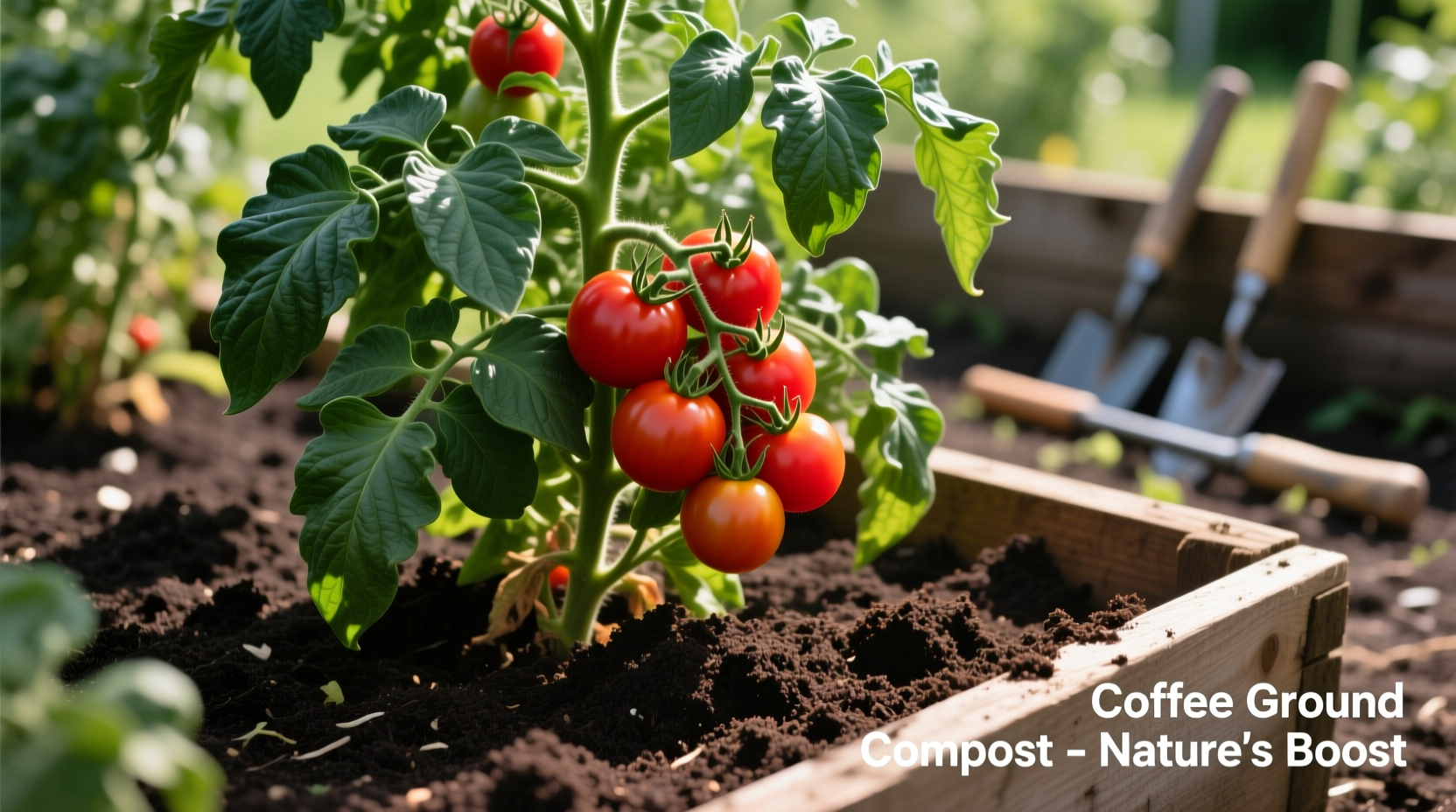Discover exactly how to transform your morning coffee waste into a powerful gardening ally for juicier tomatoes and healthier plants. This guide delivers science-backed application methods, precise measurements, and critical timing tips that most gardeners miss—helping you avoid common pitfalls while maximizing yield.
The Science Behind Coffee Grounds and Tomato Growth
Tomato plants thrive with balanced nutrition and well-aerated soil. Coffee grounds contain approximately 2% nitrogen, 0.6% phosphorus, and 0.6% potassium—essential macronutrients for fruit development. When properly composted, these grounds become a valuable soil amendment that improves water retention while encouraging beneficial microbial activity.
University of Florida IFAS Extension research confirms coffee grounds enhance soil structure in sandy soils common in tomato-growing regions. Their fibrous nature creates pore spaces that improve root penetration and oxygen availability—a critical factor for preventing root rot in moisture-loving tomatoes. The organic matter content increases gradually as grounds decompose, providing sustained nutrient release throughout the growing season.
Proper Application Techniques for Maximum Results
Timing and preparation make all the difference when using coffee grounds for tomatoes. Follow these evidence-based methods:
- Compost First: Mix coffee grounds with equal parts brown materials (dry leaves, straw) in your compost bin for 2-3 months before application. This prevents nitrogen immobilization that occurs when fresh grounds decompose in soil.
- Top Dressing Method: Apply 1/2 inch of composted coffee grounds around established plants, keeping 3 inches from stems. Water thoroughly to incorporate.
- Seedling Boost: Blend 1 part coffee compost with 3 parts potting mix for transplanting—never use fresh grounds with young roots.
- Seasonal Timing: Apply in early spring during planting and again when fruit sets. Avoid late-season applications that might encourage excessive foliage over fruit production.
According to Oregon State University Extension Service, incorporating coffee grounds at 5-10% of total soil volume provides optimal benefits without altering pH significantly. Tomatoes prefer slightly acidic soil (pH 6.2-6.8), and properly composted grounds typically stabilize around pH 6.5—well within the ideal range.
Avoiding Common Coffee Ground Mistakes
Many gardeners unknowingly harm their tomatoes through improper coffee ground use. Recognize these critical warning signs:
| Problem | Early Warning Signs | Solution |
|---|---|---|
| Nitrogen Tie-Up | Yellowing lower leaves, stunted growth 2-3 weeks after application | Mix in 1/4 cup blood meal per 5 gallons of coffee compost |
| Excessive Acidity | Purplish leaf veins, blossom end rot despite calcium supplementation | Blend with wood ash (1 tbsp per gallon of grounds) before composting |
| Mold Development | White or green fungal growth on soil surface | Rake grounds into top 2 inches of soil; reduce application frequency |
Never apply fresh coffee grounds directly to tomato plants—this common mistake creates a hydrophobic layer that repels water and encourages mold growth. The University of California Master Gardeners program documents cases where uncomposted grounds formed a dense mat that prevented water penetration, causing drought stress despite regular watering.
When Coffee Grounds Won't Help Your Tomatoes
Coffee grounds aren't a universal solution. Recognize these specific scenarios where they provide little benefit or may cause harm:
- Container Gardening: In pots under 15 gallons, coffee grounds can overwhelm the limited soil volume. Use half the recommended amount.
- Heavy Clay Soils: The additional organic matter may create waterlogged conditions. Mix with coarse sand (3:1 ratio) before application.
- Disease-Prone Varieties: For susceptible varieties like 'Early Girl', prioritize proven disease prevention over experimental amendments.
- Late-Season Applications: After July in most climates, avoid adding nitrogen-rich materials that encourage foliage over fruit ripening.
Cornell University's Gardeners Handbook notes that coffee grounds show minimal benefit in regions with naturally rich, loamy soils. In these conditions, focus on maintaining existing soil health rather than adding amendments that could disrupt nutrient balance.

Measuring Success: What to Expect
Track these measurable indicators to determine if coffee grounds are benefiting your tomato plants:
- Soil Structure: Improved workability and increased earthworm activity within 4-6 weeks
- Fruit Production: 10-15% increase in total yield compared to previous season (when other variables remain constant)
- Disease Resistance: Reduced incidence of Fusarium wilt in subsequent plantings
- Water Retention: Soil remains moist 1-2 days longer between waterings
Keep detailed records of application dates, quantities, and plant responses. The Royal Horticultural Society recommends tracking at least two growing seasons to accurately assess coffee grounds' impact, as soil microbiome changes develop gradually.
Practical Implementation Timeline
Follow this season-long schedule for optimal results with your tomato crop:
- Early Spring (Soil Preparation): Mix composted coffee grounds (20% of blend) with existing soil and aged manure
- Transplanting: Add 1 cup coffee compost to each planting hole mixed with bone meal
- Flowering Stage: Apply 1/2 inch top dressing around plants, water thoroughly
- Mid-Summer: Light application only if plants show vigorous growth (max 1/4 inch)
- End of Season: Incorporate used grounds into compost pile for next year's preparation
This phased approach prevents over-application while supporting tomatoes through critical growth stages. Remember that coffee grounds should complement—not replace—your primary fertilization program. They work best as part of an integrated soil management strategy that includes regular composting and soil testing.











 浙公网安备
33010002000092号
浙公网安备
33010002000092号 浙B2-20120091-4
浙B2-20120091-4